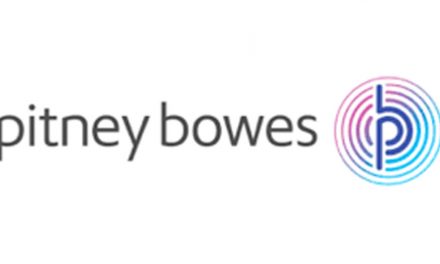
Mind the Gap

Clive Stringer, Business Development Director for Pitney Bowes, offers five golden rules to bridge the marketing gap and transform your communications. The ability to send and receive messages is innate to human nature, educating and informing us, and giving us a strong sense of belonging. From images carved on cave walls, to ancient hieroglyphics scribed in stone, to the town crier’s noisy callings, communication has always been a crucial way to share news, generate relationships and build communities. Since the 6th Century BC, it has been used as a way to compete, as Cyrus the Great introduced the early postal system in Persia to send and receive messages quicker than his rivals1. In today’s borderless world of commerce, we continue to share messages to communicate and compete. But are we doing so in the way our customers want?
New European research from Pitney Bowes reveals not. It uncovers a gap between the type of communications customers want, and those businesses are actually sending to them. It also reveals European consumers as marketing-savvy with very little tolerance for irrelevant marketing materials, with the majority deciding within just five seconds whether marketing material is relevant to them or not.
These results identify a need for businesses to reconsider and transform their communications, to use an intelligent mix of physical and digital channels, and to use the data available to them to create cut-through and deliver creative, personalised marketing campaigns.
An organisation’s ability to communicate effectively with its customers is key to delivering successful business outcomes. Yet Pitney Bowes’ research reveals that 71% of businesses in the UK, France and Germany rely on phone calls as part of their marketing mix, when 60% of UK consumers, 53% of German consumers and 51% of French consumers actually find marketing phone calls extremely irritating. Printed direct mail, on the other hand, is deemed the least irritating of all the communications channels presented: consumers in France and Germany in particular preferred the more subtle communications approach generated by printed direct mail, and social media and email too are deemed less irritating than irrelevant text messages.
The research also flagged the high volumes of marketing materials received each week, with consumers across the UK, France and Germany saying they receive an average of 17 marketing emails; 12 messages across social media; 10 promotion text messages; 10 phone calls; and nine printed promotions. This makes it even more important for organisations to develop fresh, original, personalised content to create cut-through in a crowded promotional world. They need to address the gap between what consumers want to receive, and what organisations actually send them.
Following these five golden rules will help businesses address this gap and get more from their communications:
- Increase the variety of data collected: the majority of businesses are still largely collecting name, address, email and phone numbers. Pitney Bowes’ research reveals that consumers are actually willing to share more information if it means they receive more personalised, relevant, accurate communications: sharing information on hobbies and interests, for example, with 55% of consumers in the UK, 53% in Germany and 52% in France happy to provide this data. Consumers are also willing to share information on buying habits, with 44% of respondents in France, 40% in the UK and 35% of respondents in Germany happy to do so.
- Use customer data to send better targeted communications that meet customer needs: Over a quarter of consumers said that better targeted communications that met their needs would make them more likely to respond. Using customer data more effectively would enable these accurate, precise communications. 62% of businesses in the Pitney Bowes survey feel they are not using their customer data to the full, so this presents a major opportunity for businesses to refresh their data strategies and deliver tightly targeted communications.
- Incorporate a greater level of personalisation and interactivity: there is no substitute for developing a personalised customer experience. Halfords in the UK for example now claims to know 25% of its customers personally, achieved largely through the data collected through loyalty cards2. The more businesses know about their customers, the more tailored, contextual and relevant the marketing materials can become. Over half the respondents in the Pitney Bowes survey admitted that it takes just five seconds for them to realise communications are irrelevant and discard them, so personalised, engaging communications are crucial.
- Deliver more innovative techniques in communication, with more visually engaging messaging: the high volume of communications consumers receive demonstrates a need to use creative techniques and technologies to create cut-through, such as eye-catching design, creative use of colour, personalised messaging on envelopes, and individual vouchers and offers – 34% of respondents in the survey say that including promotions and offers would improve their response to marketing communications. Nearly half the German consumers (44%) surveyed, 42% of UK consumers and over a third (38%) of French consumers would be likely to engage if the physical or digital communication they received was more clever and creative.
- Adopt an omnichannel approach: 40% of consumers think brands could be doing more to engage with them, and with a huge array of physical and digital channels to choose from, there is a fantastic opportunity for businesses to adopt a multichannel or omnichannel approach. Where a multichannel approach refers to the ability to communicate across separate physical and digital channels, an omnichannel approach is the marketing nirvana, delivering a connected brand experience connected at every touchpoint with the customer at its centre.
As businesses clamour to be heard across a noisy marketplace, adopting these golden rules will help businesses build a foundation for transforming marketing communications and improving business outcomes.
1 Source: HistoryWorld.net











